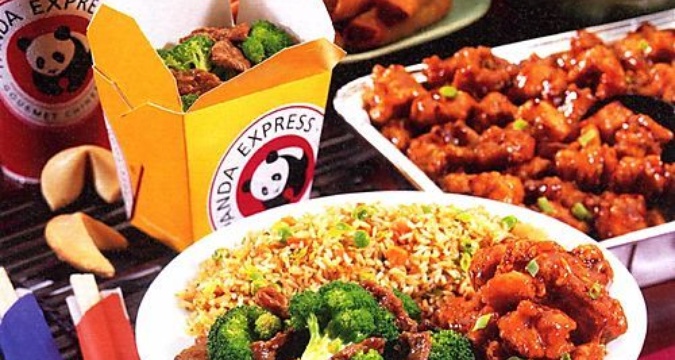Chinese food in North America is not so Chinese
北美中国菜并不中国
By: Daniel Otero
Translated by: Jessy Xu
我在纽约布鲁克林区长大的时候,在威廉斯堡有一家我最喜欢的中国餐馆叫做“新星”。但它在二十世纪七十年代就已经消失,并被更便宜方便的快餐取代。
我们当地人普遍认为我们吃着中国大陆“独家”的中国食物。随着时间推移,我也已经长大,于是事情逐渐变得清晰起来,尤其是在我来到中国之后。我逐渐意识到,超过三十种不同的“中国菜”实际上是受美国影响,或为了适合美国人口味的。
这种现象是什么时候开始的?
它始于十九世纪五十年代,加利福尼亚淘金热。当时的中国移民开始涌入美国,并各自在唐人街里建立餐馆。他们本是为了给自己的老乡提供食物,但越来越多的美国人开始享受这些“中国味”。因此到了二十世纪二十年代,中国的食品已经、并且仍然深受着美国中产阶级的喜爱。
于是华裔和华裔美国人,甚至其他亚洲群体——比如日本人,开始调整他们的菜谱,以适应当地居民的味蕾需求。
今天——没错,我们已经有了外来的调料入驻。但如果我们到中国各地旅游,我们也会注意到广东和福建的菜肴,这些菜肴影响了我们今天在北美的食物。而有一件我们不能忽视的事情——大多数烹饪艺术都坚持“酸甜”——为适应美国和加拿大的饮食习惯而设计的理念。
因此,瞧啊,这就是我们今天知名的连锁餐馆——比如熊猫快餐和百胜树——一种美国风味和中国菜肴的混合物。
但我并不是在批评它,只是对我的口味而言,有时候在盘子上留下的那么多油污告诉我这脂肪含量一定很高。
接下来更详细地介绍一下北美的中国餐馆里很受欢迎的菜肴,尽管在中国大陆,会有人不知道它们是什么。以下是一些例子:
1)杂碎。油炸蔬菜,淋有一层浓厚的酱汁。
2)蛋卷。其实更像个春卷,但是由更多的淀粉面糊煎炸而成。
3)炸馄饨。有猪肉馅或牛肉馅的,相当脆口。
4)炒面。就是炒的面。
5)宫保鸡丁。完全没有了四川的辣椒胡椒,几乎与此省无关。
6)幸运冰淇淋饼干。拜托,这东西根本就是加州制造。
7)炸馄饨条。享受一次鸭肉酱和热芥末搭配吧。
8)芙蓉鸡蛋。简单而言就是鸡蛋与美式的酱汁,添加了洋葱和韭菜。
这些改良版本基本都是油炸的,而其他中国菜馆甚至在菜单里添加日本食物,寿司和生鱼片一类——这只是几个例子。
如果你曾住在中国,而后再去美国或加拿大的中国餐馆(不是特许经营店)的话,你可能要跟老板要一份另外的菜单。通常情况下,一个会为了符合当地的口味,而另一个就是为那些体验过真正中国美食的人准备——那可是世界上最伟大的美食文化之一!
Growing up in Brooklyn, New York, there was my favorite Chinese restaurant in Williamsburg called, ‘The New Star’. This restaurant has long disappeared since the 1970s and later substituted for the cheaper variations of the ‘Take out foods’.
It was popular with us locals who thought we were eating ‘exclusive’ Chinese food from the Mainland. Time progressed and I grew-up, then things started to make sense; especially after I came to China. I realized that, over 30 different ‘so called Chinese dishes’ were actually American influenced or prepared to fit the North American palate.
When did this phenomena begin?
It began in the 1850s with the California gold rush, as Chinese immigrants started pouring into America and establishing restaurants in their respective Chinatown. They prepared foods for their compatriots, but more and more Americans started to enjoy these ‘bites of China’. So much so, that by the 1920s, already Chinese food was and still is very popular with middle-class America.
Chinese and Chinese Americans, with other Asian groups like Japanese, began adapting their menus to the local or regional taste buds.
Today, yes, we have an infusion of flavors. But if we travel across China, we’ll also notice dishes from Guangdong and Fujian Provinces; which has influenced what we have today in North America. One thing we can’t ignore, most of these culinary arts hold to the concept of ‘sweet and sour’. A variation of dishes stylized to fit the American and Canadian diet.
Therefore, voila, this is what we have today with famous-restaurant chains like, Panda Express or Yum Yum Tree–a mixture of American flavors into the Chinese cuisine.
I’m not saying it isn’t any good; however, sometimes the dishes can be a little too on the fatty side or oily for my taste.
To go further into details with dishes which are very popular in Chinese restaurants in North America; however, nobody has a clue in Mainland China what there all about. Here are some examples, just to name a few:
- Chop Suey (杂碎) – fried vegetables with a thick layer of sauce
- Egg roll (蛋卷) – which is more like a spring roll, but fried in a deep cornstarch and batter
- Fried Wonton – with pork or beef filling, quite crunchy
- Chow Mein (炒面) – stir fried noodles
- Kung Pao Chicken (宫保鸡丁) – leaving out entirely the Sichuan pepper and having nothing to do with the Province
- Fortune cookie with ice cream – come on, that’s something entirely Californian
- Fried wonton strips – enjoyed with duck sauce and hot mustard
- Egg Foo Young (芙蓉蛋) – basically an American-British Chinese omelette in soy sauce, onions and chives
Most of these versions are fried; while other Chinese restaurants have added Japanese dishes into their menus. Sushi and sashimi are the two most popular, just to name a few.
If you have lived in China and visit a Chinese restaurant (one that’s not a franchise) in the United States or Canada; you may have to ask the owner for ‘the other menu’. Usually, one will fit to the local taste. The other is for those who have really experienced what Chinese food is all about, one of the greatest foodie cultures in the world!







